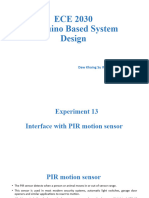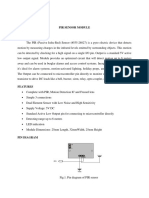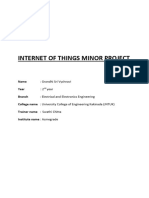0% found this document useful (0 votes)
50 views9 pagesDIY PIR Motion Sensor Guide
The document outlines a DIY PIR Motion Sensor Project using the HC-SR501, detailing its functionality, applications, and construction methods across three iterations: breadboard, zero board, and PCB. It explains how the PIR sensor detects infrared radiation to activate devices like lights and alarms, emphasizing hands-on learning and cost-effective prototyping. The project is suitable for enhancing security and automation in various settings, including intruder alarms and home automation systems.
Uploaded by
namakulag02Copyright
© © All Rights Reserved
We take content rights seriously. If you suspect this is your content, claim it here.
Available Formats
Download as PDF, TXT or read online on Scribd
0% found this document useful (0 votes)
50 views9 pagesDIY PIR Motion Sensor Guide
The document outlines a DIY PIR Motion Sensor Project using the HC-SR501, detailing its functionality, applications, and construction methods across three iterations: breadboard, zero board, and PCB. It explains how the PIR sensor detects infrared radiation to activate devices like lights and alarms, emphasizing hands-on learning and cost-effective prototyping. The project is suitable for enhancing security and automation in various settings, including intruder alarms and home automation systems.
Uploaded by
namakulag02Copyright
© © All Rights Reserved
We take content rights seriously. If you suspect this is your content, claim it here.
Available Formats
Download as PDF, TXT or read online on Scribd
/ 9






















































































